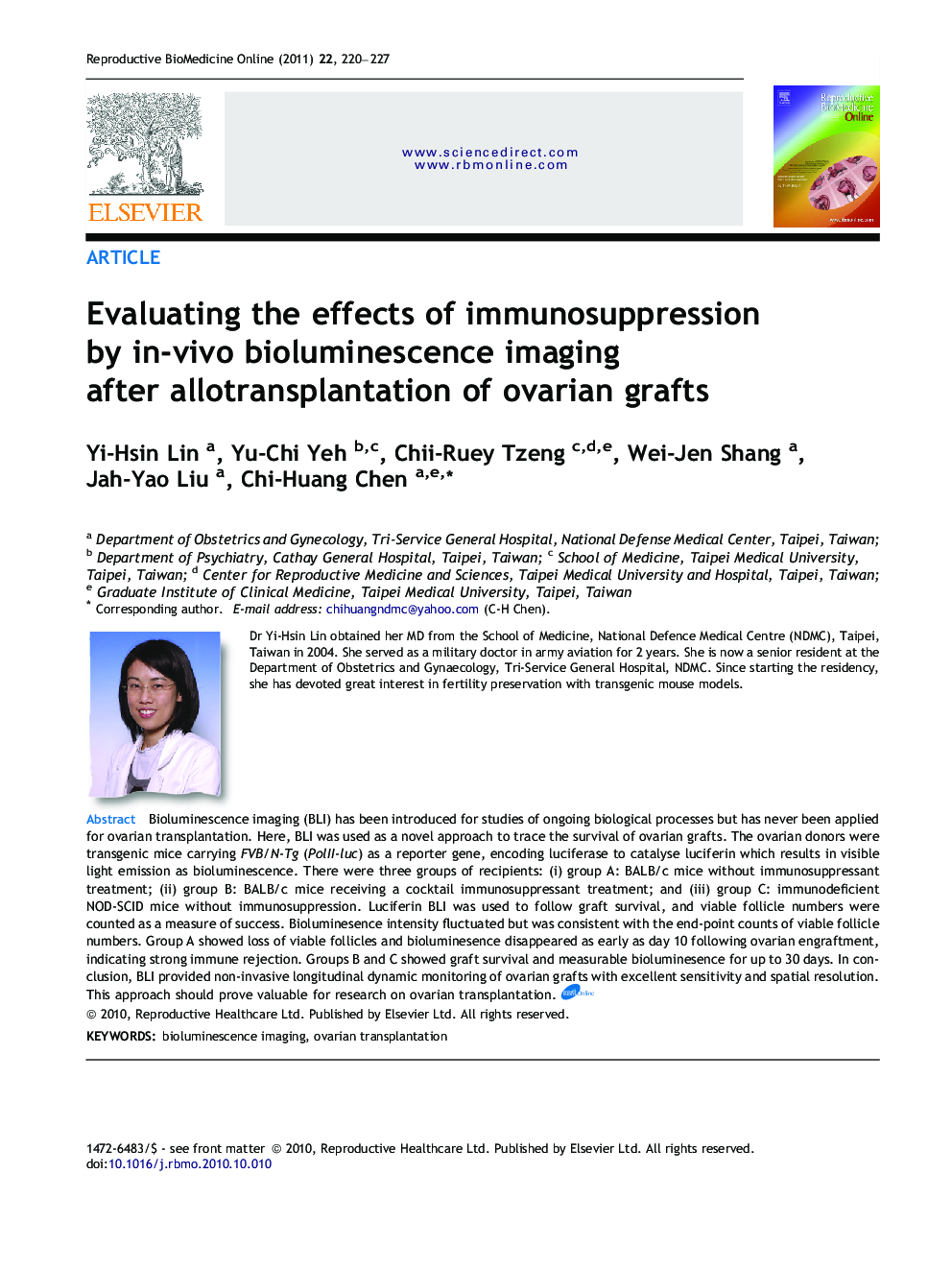| Article ID | Journal | Published Year | Pages | File Type |
|---|---|---|---|---|
| 3971278 | Reproductive BioMedicine Online | 2011 | 8 Pages |
Bioluminescence imaging (BLI) has been introduced for studies of ongoing biological processes but has never been applied for ovarian transplantation. Here, BLI was used as a novel approach to trace the survival of ovarian grafts. The ovarian donors were transgenic mice carrying FVB/N-Tg (PolII-luc) as a reporter gene, encoding luciferase to catalyse luciferin which results in visible light emission as bioluminescence. There were three groups of recipients: (i) group A: BALB/c mice without immunosuppressant treatment; (ii) group B: BALB/c mice receiving a cocktail immunosuppressant treatment; and (iii) group C: immunodeficient NOD-SCID mice without immunosuppression. Luciferin BLI was used to follow graft survival, and viable follicle numbers were counted as a measure of success. Bioluminesence intensity fluctuated but was consistent with the end-point counts of viable follicle numbers. Group A showed loss of viable follicles and bioluminesence disappeared as early as day 10 following ovarian engraftment, indicating strong immune rejection. Groups B and C showed graft survival and measurable bioluminesence for up to 30 days. In conclusion, BLI provided non-invasive longitudinal dynamic monitoring of ovarian grafts with excellent sensitivity and spatial resolution. This approach should prove valuable for research on ovarian transplantation.Bioluminescence imaging (BLI) has been introduced for studies of ongoing biological processes but has never been applied for ovarian transplantation. Here, we used BLI as a novel approach to trace the survival of ovarian grafts. The ovarian donors were transgenic mice carrying FVB/N-Tg (PolII-luc) as a reporter gene encoding luciferase to catalyse luciferin, resulting in visible light emission as bioluminescence. There were three groups of recipients: group A, BALB/c mice without immunosuppressant treatment; group B, BALB/c mice receiving a cocktail immunosuppressant treatment and group C, immunodeficient NOD-SCID mice without immunosuppression. Luciferin BLI was used to follow engrafted tissue survival, and viable follicle numbers were counted as a measure of success. We found that bioluminescence intensity fluctuated but was consistent with the end-point counts of viable follicle numbers. Group A showed loss of viable follicles, and bioluminescence disappeared as early as the 10th day following ovarian engraftment, indicating strong immune rejection. Groups B and C showed graft survival and measurable BLI for up to 30 days. In conclusion, BLI provided non-invasive longitudinal dynamic monitoring of ovarian grafts with excellent sensitivity and spatial resolution. This approach should prove valuable for research on ovarian transplantation.
